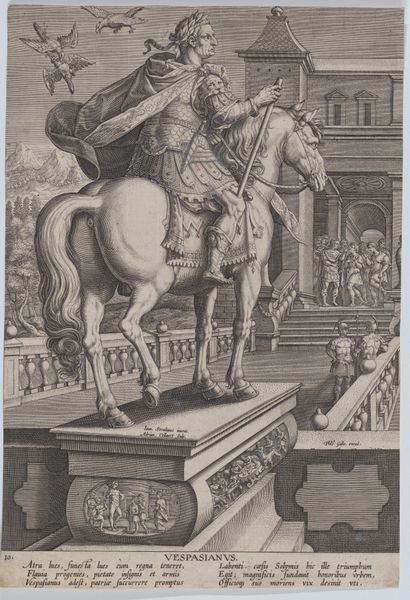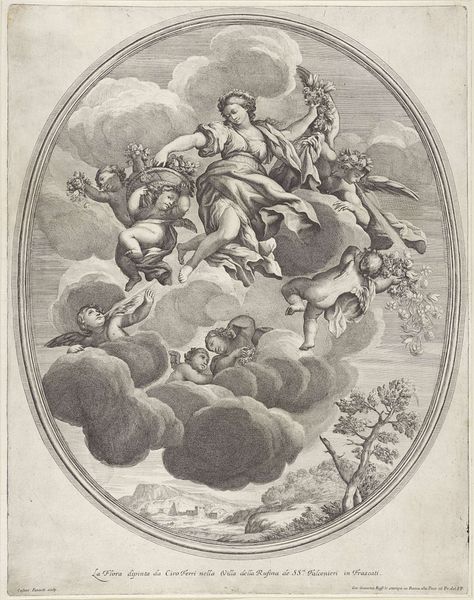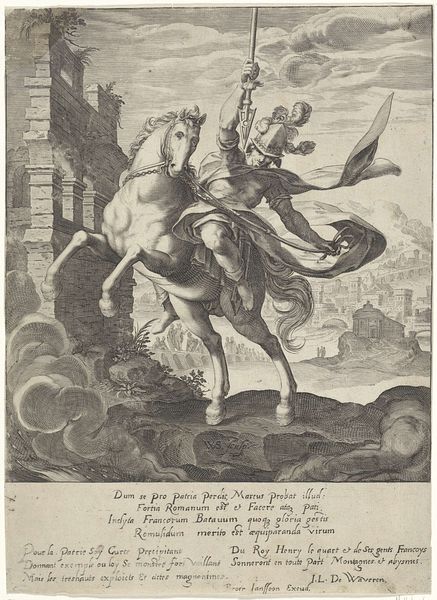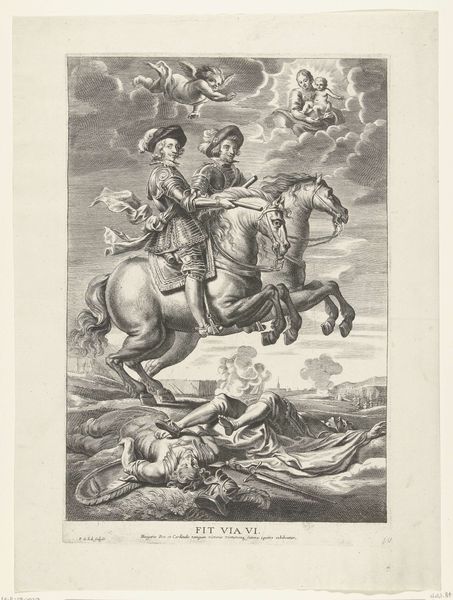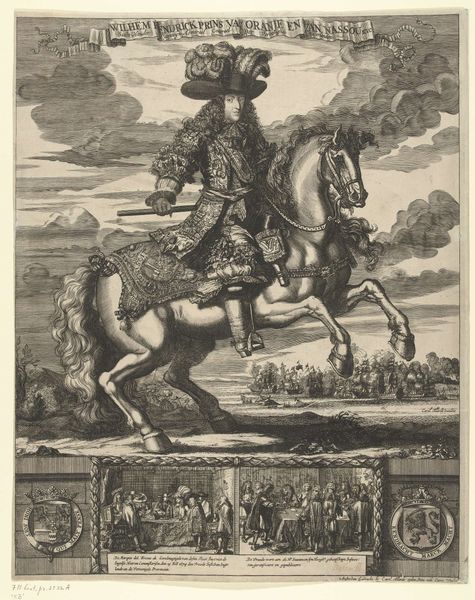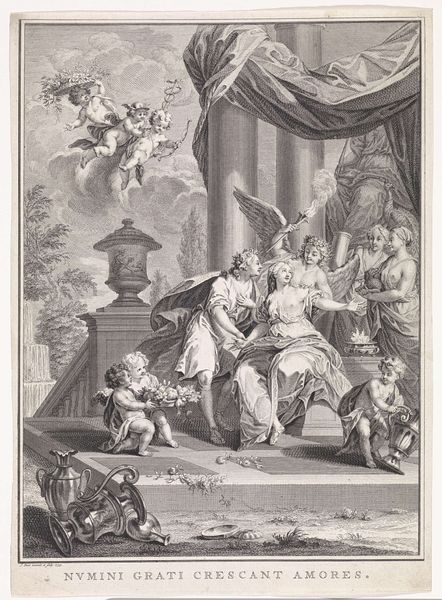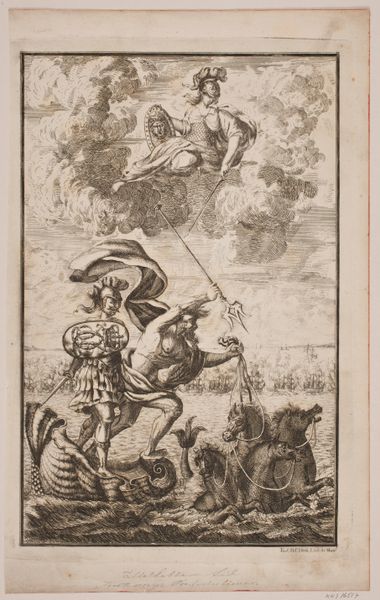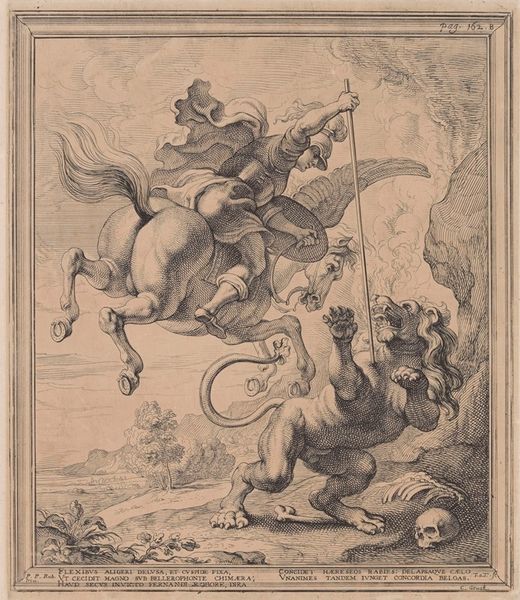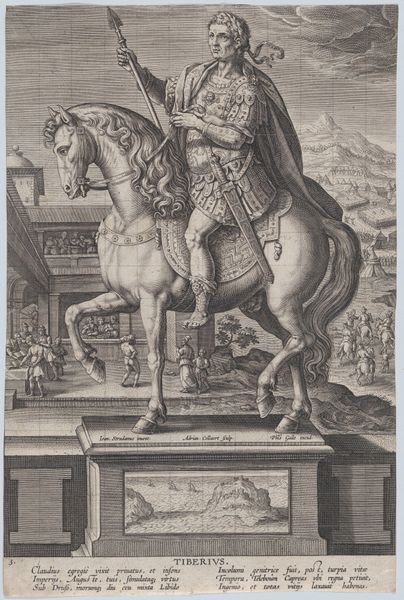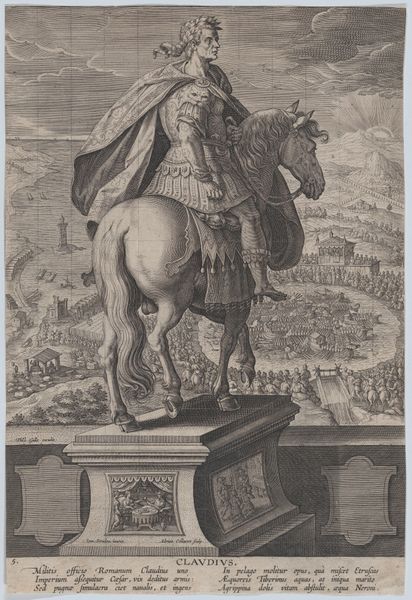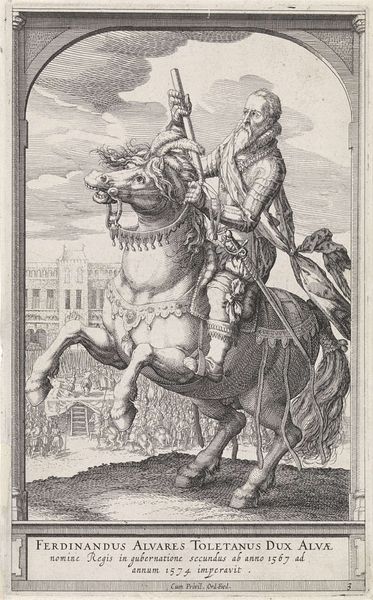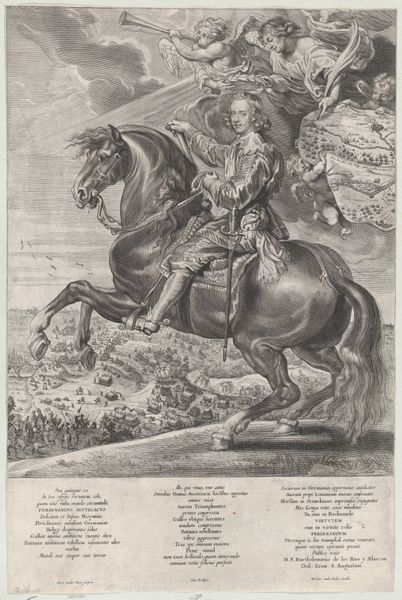
drawing, print, engraving
#
portrait
#
drawing
#
allegory
#
baroque
# print
#
caricature
#
surrealism
#
portrait drawing
#
history-painting
#
engraving
Dimensions: 231 mm (height) x 159 mm (width) (bladmaal)
Editor: So, here we have Marcus Tuscher's engraving, "Frederik V hyldes af Danmark og Norge," created between 1746 and 1749. The allegorical imagery gives it this feeling of... staged grandeur. It almost feels like propaganda, even. What do you see in this piece? Curator: Indeed. Considering the historical context of absolutist monarchies is crucial. Tuscher presents us with Frederik V, not just as a man, but as a symbol of power legitimized by divine right, allegorically embraced by personifications of Denmark and Norway. But let's consider the politics of representation here: who benefits from such glorification, and whose stories are being erased or marginalized? Editor: So, the almost overwhelming symbolism serves a political function. Curator: Precisely. It reinforces the hierarchical power structure of the time. Think about how the enlightenment ideals were emerging then, challenging traditional authority. How do you think this piece participates or resists that change? Editor: I suppose it actively resists it. The image feels like a conscious effort to maintain the status quo through spectacle. This is very baroque. I notice an angel flying above holding what seems to be a crown. Is she part of it? Curator: Definitely. Angels at the top reinforce the divine right concept. Notice who is included, and perhaps more importantly, who is excluded. This image is about power, but also about exclusion and maintaining an ideal image, especially considering that he had many personal flaws. What could that say? Editor: It makes you wonder about the role of artists then. How much autonomy did they have when depicting the monarchy? Curator: Exactly! And how does art serve to perpetuate social and political narratives? Editor: It’s definitely more complex than I initially thought. Seeing the image this way forces you to question everything about the time. Curator: Indeed. By understanding the power dynamics embedded in works like these, we gain insight into both the artwork itself and the society that produced it.
Comments
No comments
Be the first to comment and join the conversation on the ultimate creative platform.
